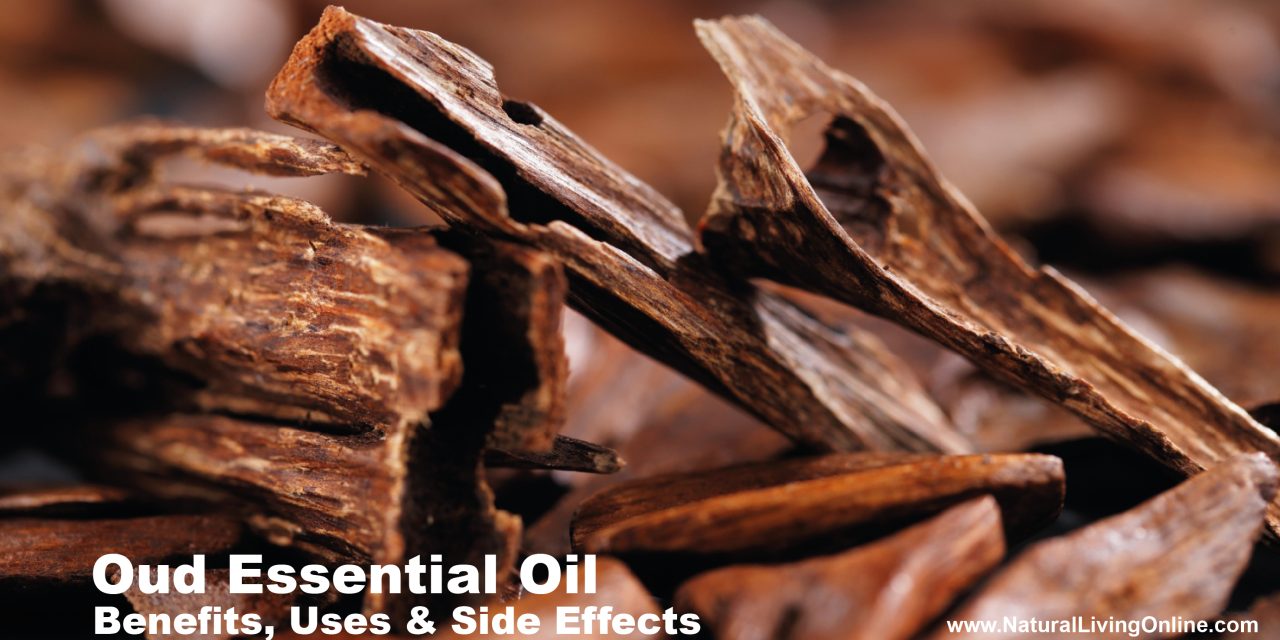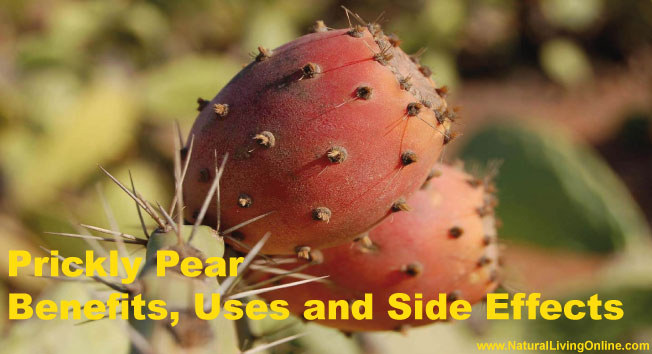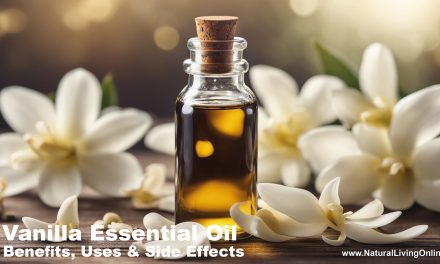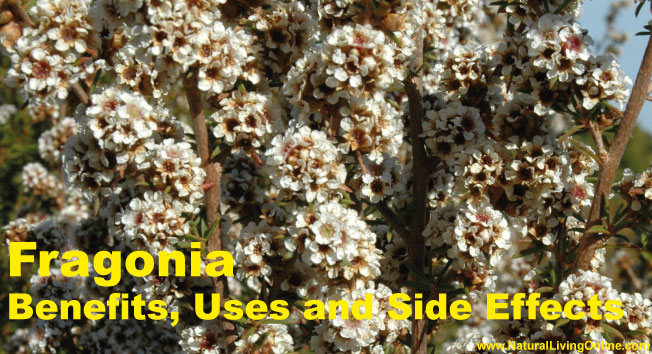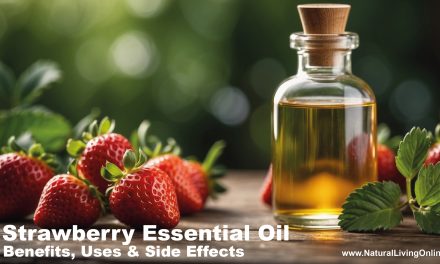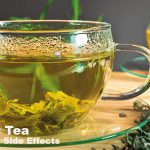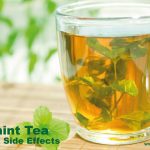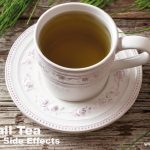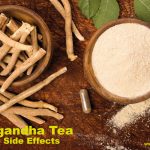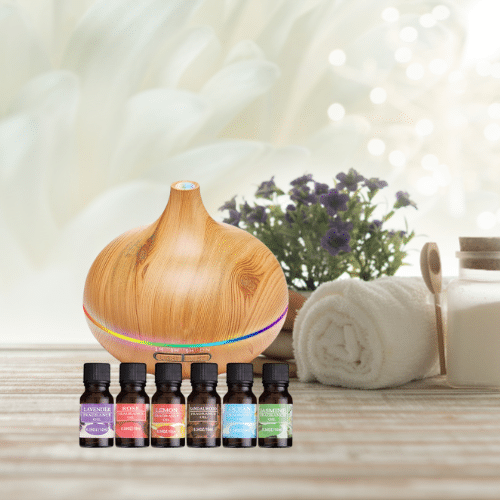Oud essential oil, known for its distinctive fragrance and rarity, is revered in perfumery and traditional medicine. Extracted from the resinous heartwood of the Aquilaria tree, an infection process turns the wood into a valuable source of oud, also known as agarwood. Culturally significant, particularly in Middle Eastern and Asian societies, this essential oil has been a symbol of luxury and spiritual wellness for centuries.
The therapeutic uses of oud essential oil extend beyond its aromatic appeal. It’s touted for potential health benefits, including anti-inflammatory and antibacterial properties, making it a candidate for holistic health practices. However, like all potent botanicals, oud oil must be used with caution to avoid adverse reactions, enforcing the importance of understanding its potential risks alongside its praised benefits.

Key Takeaways
- Oud essential oil is valued for its unique scent and potential health benefits.
- It originates from the heartwood of the Aquilaria tree and holds cultural importance.
- Responsible use is essential due to the oil’s potency and possible side effects.
Origins and Cultural Significance
Oud, also known as agarwood, originates from the heartwood of Aquilaria trees, which are indigenous to various regions of Asia, notably Southeast Asia. The cultivation and use of oud have deep roots in various Asian cultures, with its significance permeating through religious and traditional practices.
In the context of religion, oud has been esteemed for centuries, especially within Buddhist traditions. It is believed that burning agarwood incense can aid in the pursuit of enlightenment and the attainment of nirvana. Likewise, Chinese and Japanese cultures have long regarded its unique fragrance as an accompaniment to spiritual rituals and ceremonies.
| Region | Use of Oud |
|---|---|
| Middle East | Perfumery, religious ceremonies |
| China | Traditional medicine, incense |
| Japan | Incense, cultural ceremonies |
Across Southeast Asia, particularly in areas like Thailand and Vietnam, the Aquilaria tree is often infected by a specific type of mold. Once infected, the tree produces a fragrant and dark resin within its heartwood. It is this resin-rich wood that is harvested to produce oud, which is also referred to as agar in certain cultures.
In traditional forms of medicine, like Ayurvedic and Chinese medicine, oud is touted for its purported health benefits. These traditional healthcare systems have used agarwood to treat a variety of ailments due to its believed medicinal properties.
Not only considered valuable in the context of health and religion, but oud also holds an esteemed place in the cultural heritage of the Middle East, where its scent is a symbol of hospitality and a staple in personal grooming. It’s not uncommon for oud to be gifted within these communities or for its fragrance to be a distinctive feature of social settings and personal attire.
Extraction of Oud Essential Oil
The production of Oud essential oil, also known as agarwood essential oil, begins with a meticulous extraction process. This esteemed oil is derived from the resinous heartwood of the Aquilaria tree, commonly the Aquilaria crassna species. When the heartwood of these trees becomes infected with a specific type of mold, it produces a dark, aromatic resin used to create Oud oil.
The primary method to obtain the oil is through steam distillation. This careful procedure involves:
- Chipping: Chipping the resin-laden wood into smaller pieces to increase the surface area for extraction.
- Soaking: Soaking the wood chips in water for a period to soften the resin.
- Distillation: Using steam to pass through the soaked chips in a distillation apparatus, which vaporizes the volatile compounds.
- Condensation: Allowing the vapor to travel through a cooling system to condense it back into a liquid form.
- Separation: Collecting the condensed liquid, which contains both water and oil, and leaving it to separate, as the oil, being lighter, floats on the water.
| Step | Description |
|---|---|
| Chipping | Wood is chipped into smaller pieces. |
| Soaking | Chips are submerged in water to soften resin. |
| Distillation | Steam is used to vaporize the oil from the resinous chips. |
| Condensation | Vapor cools and converts into liquid. |
| Separation | Oil is separated from water due to differences in density. |
The process of steam distillation preserves the complex aroma profile of Oud essential oil. The method is preferred for yielding high-quality essential oils and ensuring the natural essence is captured without degradation. The rarity of agarwood and the intricate extraction technique contribute to the high value of Oud oil in the global market.
Essential Oil Profile
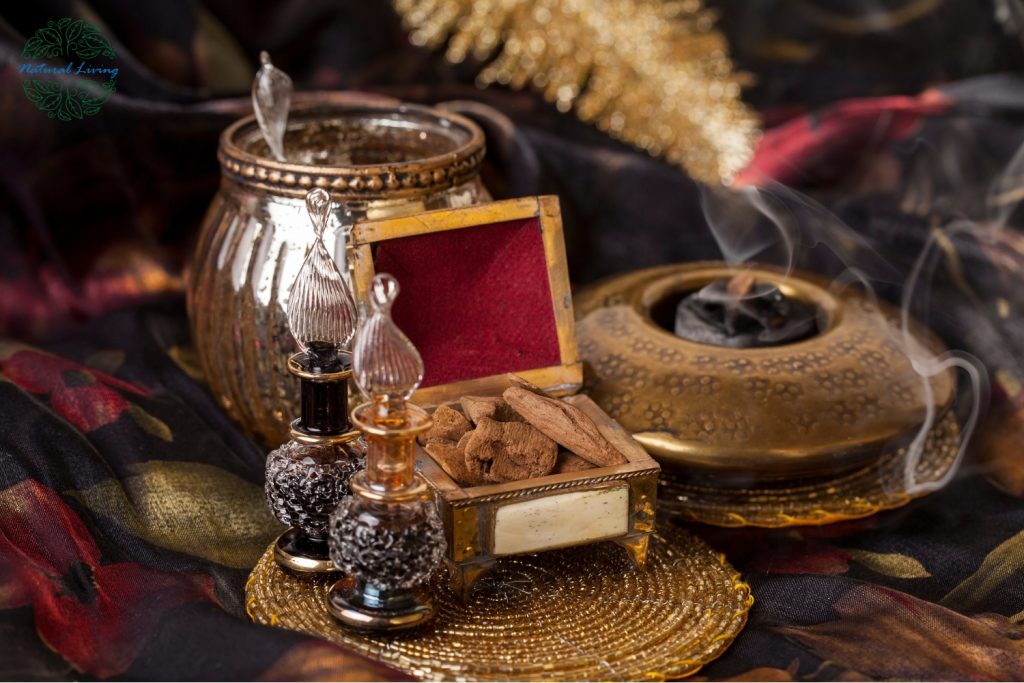
Botanical Name: Aquilaria malaccensis, Aquilaria agallocha (and other Aquilaria species)
Common Names: Oud, Agarwood, Aloeswood, Eaglewood, Gaharu
Plant Family: Thymelaeaceae
Countries of Origin: India, Bangladesh, Thailand, Cambodia, Malaysia, Indonesia, Laos, Vietnam
Extraction Method: Steam distillation or CO2 extraction
Parts Used: Heartwood infected by a specific type of mold (Phialophora parasitica)
Essential Oil Smell: Rich, woody, balsamic, earthy, and slightly sweet with hints of leather and spices
Essential Oil Color: Deep amber to dark brown
Viscosity: Medium to thick
Perfumery Note: Base
Strength of Aroma: Strong
Blends Well With
- Rose (Rosa damascena)
- Sandalwood (Santalum album)
- Frankincense (Boswellia carterii)
- Myrrh (Commiphora myrrha)
- Patchouli (Pogostemon cablin)
- Cedarwood (Cedrus atlantica)
- Jasmine (Jasminum grandiflorum)
Therapeutic Properties
- Antimicrobial
- Anti-inflammatory
- Antioxidant
- Aphrodisiac
- Relaxant
- Grounding
- Meditative aid
- Analgesic
- Antidepressant
Uses
- Perfumery: as a luxurious and exotic base note in high-end fragrances
- Aromatherapy: to promote relaxation, relieve stress, and enhance meditation
- Skincare: in small amounts for its antibacterial and anti-inflammatory properties
- Spiritual practices: used in incense and anointing oils
- Massage: to relax muscles and soothe the mind
Contraindications
- Not recommended for use during pregnancy and breastfeeding without consulting a healthcare provider.
- May cause skin sensitivity; perform a patch test before use.
- Use in moderation due to its strong and potent aroma.
Side Effects
- Potential skin irritation or allergic reactions in sensitive individuals.
- May be overpowering if used in large quantities.
Types
- Pure Oud Essential Oil (steam-distilled or CO2-extracted)
- Oud Attar (Oud oil blended with other essential oils or base oils)
Chemical Constituents
(Note: The exact composition can vary greatly depending on the species, origin, and age of the wood, as well as the method of extraction. The following are common constituents found in oud oil.)
- Agarol (10-15%): Contributes to the rich, woody aroma.
- Beta-agarofuran (8-12%): Offers antimicrobial and anti-inflammatory properties.
- Alpha-agarofuran (5-10%): Provides a woody and earthy scent.
- Agarospirol (3-8%): Known for its relaxing and grounding effects.
- Jinkoh-eremol (3-7%): Adds to the complex, sweet, and woody fragrance.
- Selinene (2-5%): Contributes to the earthy and slightly spicy note.
- Eudesmol (1-4%): Provides a woody and calming aroma.
Oud essential oil is highly prized in perfumery and aromatherapy for its deep, complex, and exotic scent. Its unique aroma, combined with its therapeutic properties, makes it a valuable and luxurious addition to various applications, from personal fragrances to spiritual practices.
Therapeutic Benefits and Uses
Oud essential oil, derived from the agarwood tree, is esteemed for its wide range of therapeutic benefits. It has been utilized for centuries in aromatherapy, skin care, and traditional medicine, often noted for its distinct fragrance and health-promoting properties.
Aromatherapy and Psychological Effects
In the realm of aromatherapy, the aroma of oud essential oil is known to help alleviate stress, anxiety, and depression. Its potential to promote relaxation and sleep has made it a favored choice for those dealing with insomnia. The oil is also regarded in various spiritual traditions for its capacity to enhance meditation and elevate the spiritual experience.
- Stress Relief: Utilized to create a calming environment that may reduce feelings of stress.
- Sleep Aid: Can be diffused at bedtime to aid in a more restful sleep.
For more on the relation between oud essential oil and its psychological effects, this aromatherapy study elaborates on its sedative qualities.
Skin Care and Cosmetic Uses
Oud oil exhibits anti-inflammatory and antibacterial qualities that could benefit skin care regimens, particularly in addressing skin conditions and slowing aging. It is incorporated into various cosmetic formulations for its healing properties as well as its luxurious fragrance.
- Anti-inflammatory: May soothe inflammation and assist with conditions like eczema.
- Antibacterial: Utilized for its germ-fighting capabilities which can help in preventing acne.
Users seeking information on the skin benefits can read more at Agarwood Essential Oil Benefits and Uses.
Potential Medicinal Applications
Historically, oud essential oil has been valued in Ayurvedic and other traditional forms of medicine for its therapeutic properties. It has been studied for its analgesic properties, potential digestive aid, and as an aphrodisiac.
- Analgesic: The oil has been traditionally used to relieve pain in various ailments.
- Digestive System: There is some evidence to suggest it can help in relieving some digestive issues.
- Aphrodisiac: Oud is sometimes used to enhance libido due to its reputed aphrodisiac properties.
An exploration into the traditional medicinal uses of oud, including potential benefits for the urinary tract and as a cooling agent for the body, can be found on EVERYTHING YOU SHOULD KNOW ABOUT OUD.
Safety, Risks, and Side Effects
When considering the use of oud essential oil, it is essential to address safety and potential side effects. Individuals should be aware of the risks, such as allergies or skin sensitivity, before incorporating this potent oil into their wellness routine.
Skin Sensitivity: A patch test is recommended to determine an individual’s reaction to oud essential oil before widespread application. This involves applying a small amount of the oil to a discreet area of the skin and observing for any adverse reactions.
Allergic Reactions: Although not common, allergic reactions to essential oils can occur. Symptoms may include hives, itching, or respiratory issues. Those with sensitive skin or allergy histories should proceed with caution.
Toxicity: The concentration of essential oils means they should be used sparingly and never ingested without professional advice. Oud essential oil is potent, and toxic effects can occur if used improperly.
Use During Pregnancy: The safety of oud essential oil for expectant mothers hasn’t been established. They should consult a healthcare provider before use.
Dilution is key to minimizing risks. Essential oils should typically be diluted with a carrier oil prior to skin application to reduce the possibility of irritation. Furthermore, they should be kept out of reach of children and pets to avoid accidental ingestion or contact.
By adhering to guided usage and respecting the potent nature of oud essential oil, one can minimize risks and safely enjoy its aromatic and potentially therapeutic benefits.
Incorporating Oud Essential Oil into Daily Life
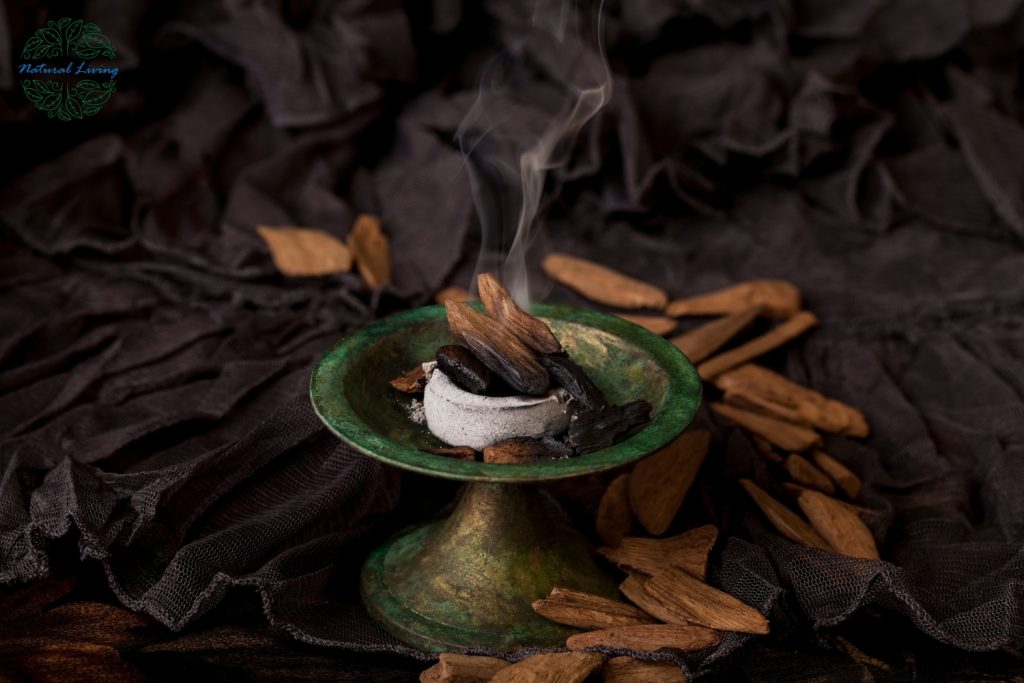
Oud essential oil, with its complex and woodsy aroma, is an exquisite choice for enhancing personal ambiance and promoting wellness. Its versatility enables it to be seamlessly woven into daily practices for scent, meditation, and relaxation.
Personal Fragrances
Oud essential oil is highly valued in perfumery for its rich scent. When creating a personal fragrance, it’s important to mix Oud with a carrier oil like coconut oil to dilute its intensity. A few drops applied to pulse points can produce a long-lasting, intimate aroma. For a more intricate fragrance profile, Oud pairs exceptionally well with sandalwood, adding depth and warmth to the blend.
Home Aromatics
For those seeking to infuse their living space with a sense of comfort and luxury, diffusing Oud essential oil is the perfect choice. The oil’s potent scent can be used in a diffuser to permeate the home, creating an inviting and serene atmosphere. To heighten the experience, one might combine Oud with other essential oils which can contribute to a relaxation-inducing environment.
Wellness Routines
Integrating Oud essential oil into wellness routines can have several benefits. When combined with a carrier oil and used in massage, it not only nourishes the skin but also provides a sensory experience that may enhance a sense of calm and wellness. Its scent is said to have grounding properties that can be particularly soothing during times of stress.
Aromatherapy
For those who engage in aromatherapy or meditation, Oud essential oil can be an excellent addition. Its complex aroma is said to enhance the mind‘s ability to focus and enter a meditative state. Using Oud during such practices may deepen the relaxation effect and assist in achieving a more profound state of mindfulness.
Frequently Asked Questions
What are the known benefits of using Oud essential oil for skin care?
The rich compounds within Oud essential oil are known for their antibacterial and anti-inflammatory effects, which can be beneficial for skin care. Its application can help soothe irritation and improve the overall health of the skin.
How can Oud essential oil contribute to hair health?
Oud essential oil is said to imbue the hair with a lustrous sheen and contribute to scalp health. While there is less scientific evidence available, users report improved hair texture and reduced dandruff.
In what ways is Agarwood oil incorporated in spiritual practices?
Agarwood oil has a profound history in spiritual practices, where it is used in incense and perfumery. Its aromatic profile is thought to deepen spiritual connections and promote tranquility in religious ceremonies.
What are the recommended methods for applying Agarwood oil?
To use Agarwood oil, you can swipe it across the skin or apply it through spot distribution for targeted effects. Applying with a roller or a gentle dab ensures the oil is distributed evenly on the desired areas, as elaborated in Ensar Oud’s guide.
Are there any recognized medicinal uses for Agarwood essential oil?
Agarwood essential oil is often cited for its potential in alleviating respiratory conditions such as coughs, colds, and asthma thanks to its decongestant properties. Though widely believed to be beneficial, consulting healthcare professionals before use is advisable for treating medical conditions.
What potential side effects should be considered when using Agarwood tea or oil?
Like many essential oils, Agarwood oil may cause allergic reactions or sensitivity in some individuals when applied directly to the skin. It is important to conduct a patch test or dilute the oil with a carrier oil before broader use. Additionally, use Agarwood tea cautiously, as the effects are not well researched and could vary from person to person.
References:
A Review Study of Agarwood Oil and Its Quality Analysis
Screening of anticancer activity from agarwood essential oil
Agarwood—The Fragrant Molecules of a Wounded Tree
This website does not provide medical advice.
All information provided on this website, and on associated social media networks, including but not limited to texts, images, and numbers are for general information purpose only. It is not intended as medical advice and it does not include all possible precautions, side effects, or interactions that may occur. Neither NaturalLivingOnline.com nor its author/founder take responsibility for how you use this information. Statements contained on NaturalLivingOnline.com have not been evaluated by the FDA. You should conduct thorough research via multiple sources and consult your physician or qualified doctor before using any essential oil or herbal remedy. Information on NaturalLivingOnline.com must not be relied upon for medical, legal, financial or other decisions.

